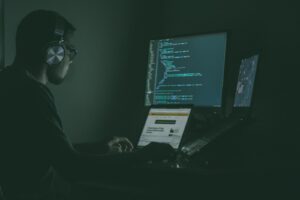In the digital age, cybersecurity stands as one of the most critical challenges facing individuals, organizations, and nations. As our reliance on technology grows, so does the complexity and frequency of cyber threats. From personal data breaches to attacks on critical infrastructure, the consequences of cybersecurity lapses are profound and far-reaching. This article delves into the multifaceted challenge of cybersecurity, exploring its dimensions, the evolving nature of threats, and the strategies for defense.
The Ever-Expanding Cyber Threat Landscape
The digital revolution has transformed the way we live, work, and interact. However, this interconnectedness brings with it a heightened vulnerability to cyber attacks. Cyber threats can range from phishing scams targeting individuals to sophisticated state-sponsored attacks aimed at undermining national security. Ransomware attacks encrypt victims’ data and demand ransom for its release, causing significant disruption. Meanwhile, Distributed Denial of Service (DDoS) attacks can take down websites and networks, crippling businesses and services.
The Complexity of Cybersecurity
Cybersecurity is not merely a technical challenge but a complex issue that encompasses legal, ethical, and social dimensions. Protecting digital assets requires understanding not only of technology but also of human behavior, law, and policy. Cybersecurity strategies must balance the need for security with the rights to privacy and freedom of expression. Furthermore, the global nature of the internet means that cyber threats often transcend national borders, complicating legal jurisdiction and enforcement.
 The Evolving Nature of Cyber Threats
The Evolving Nature of Cyber Threats
Cyber threats are continually evolving, becoming more sophisticated and harder to detect. Hackers and cybercriminals employ advanced techniques like artificial intelligence (AI) and machine learning to automate attacks and evade detection.
At the same time, the Internet of Things (IoT) expands the attack surface, with billions of connected devices potentially vulnerable to hacking. IoT represents a network of interconnected devices embedded with sensors, software, and other technologies aimed at exchanging and analyzing data with other devices and systems over the internet. These devices range from ordinary household items like refrigerators and thermostats to sophisticated industrial tools. IoT has the potential to revolutionize daily life by enhancing efficiency, convenience, and energy savings. It enables automation in homes, promotes smarter urban development, and improves decision-making in industries. However, it also raises significant challenges regarding privacy, security, and data management, as the vast amount of data generated poses risks if not properly secured and managed. As technology advances, so too do the tools and methods at the disposal of cyber attackers, making it a perpetual arms race between attackers and defenders.
Cybersecurity in the Age of Big Data and AI
The advent of big data and AI presents new challenges and opportunities in cybersecurity. On the one hand, AI can enhance cybersecurity defenses, automating threat detection and response, and analyzing vast datasets to identify patterns indicative of cyber attacks. On the other hand, AI can also be used by attackers to develop more sophisticated malware and phishing attacks. The dual-use nature of AI and big data underscores the need for ethical considerations and robust security measures in their deployment.
The Human Factor in Cybersecurity
Human error remains one of the weakest links in cybersecurity. Phishing attacks, which trick individuals into revealing sensitive information or downloading malware, are among the most common cyber threats. Educating users about safe online practices is crucial, yet it is also important to design systems and interfaces that minimize the risk of human error. Beyond individual users, organizations must foster a culture of cybersecurity awareness, where security is everyone’s responsibility.
Strategies for Strengthening Cybersecurity
Combating cyber threats requires a multifaceted approach. Technologically, this involves deploying advanced encryption, firewalls, intrusion detection systems, and other defensive measures. Regularly updating and patching software can close vulnerabilities before attackers can exploit them. On the organizational level, cybersecurity strategies include conducting regular security audits, developing incident response plans, and investing in employee training.
The Role of Governments and International Cooperation
Given the transnational nature of cyber threats, international cooperation is essential. Governments play a crucial role in cybersecurity, from setting legal frameworks and standards to engaging in diplomacy to forge international agreements on cyber conduct. Collaborative efforts, such as information sharing between countries and public-private partnerships, can enhance the collective ability to detect and respond to cyber threats.
Privacy, Ethics, and the Future of Cybersecurity
As cybersecurity measures become more intrusive, balancing security with privacy and ethical considerations becomes increasingly challenging. The use of surveillance and data collection for security purposes raises concerns about privacy rights and government overreach. Ethical guidelines and oversight are needed to ensure that cybersecurity measures respect individual freedoms and democratic values.
Conclusion: Charting a Course Through the Cyber Storm
The challenge of cybersecurity is one of the defining issues of our time. As we navigate the digital storm, it is clear that no single entity can face this challenge alone. It requires a collective effort, combining technological innovation, education, policy development, and international cooperation. By understanding the complexity of cyber threats and implementing comprehensive strategies for defense, we can work towards a more secure digital future. Yet, as the cyber landscape continues to evolve, so too must our approaches to cybersecurity. The journey is ongoing, and vigilance is our compass in the uncharted waters of the digital age.




